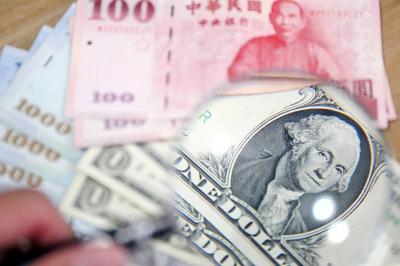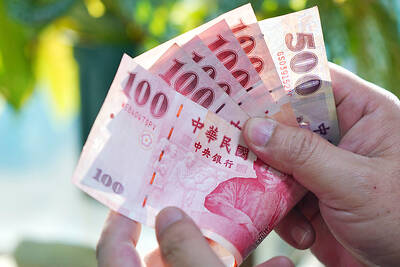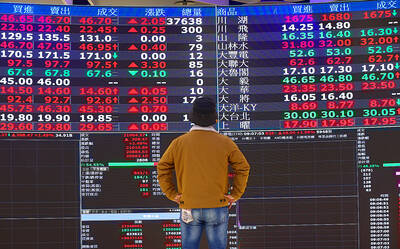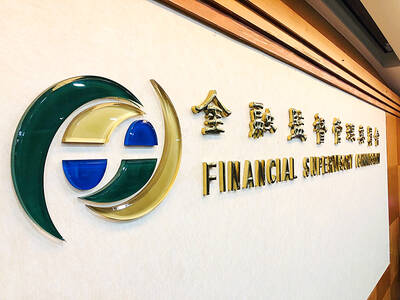The Financial Supervisory Commission (FSC) yesterday said that it is drafting a comprehensive stress test to gauge domestic banks’ ability to withstand wide swings in variables affecting risk exposure.
Unlike previous tests evaluating banks’ resilience against specific risk exposures, the latest test is to encompass macroeconomic factors such as the nation’s economic growth rate, jobless rate, the value of the New Taiwan dollar and interest rates.
Domestic banks have passed a number of stress tests simulating inclement conditions in specific segments, and have met the commission’s requirements for financial ratios.
In 2010, banks demonstrated that they were able to weather slowing GDP growth, rising unemployment and a cooling housing market and had managed to contain impacts to their financial conditions at the range required by the commission.
Stress tests on banks’ exposure to domestic home loans and loans by their China-based lending operations were carried out in 2014 and last year respectively.
The nation’s banks passed both tests, showing that they were able to contain impacts to their capital adequacy and tier 1 ratios at a level deemed manageable by the commission.
A Tier 1 capital ratio measures a bank’s financial strength based on the sum of its core equity capital and total risk-weighted assets, while capital adequacy determines the financial strength of a company.
The commission is reviewing the outcome of a stress test on banks’ exposure to yuan-linked target redemption forward (TRF) contracts that was conducted last month.
While analysts are in agreement that the worst of the concerns about TRF contracts have passed, as a majority of the contracts expired as of the end of last month, they said unexpected swings in the yuan’s strength could still cause significant losses for banks.
The FSC’s TRF stress test simulating a weakened yuan of 6.8 per US dollar was deemed inadequate, as the yuan is expected to fall to 7.5 against the greenback by the end of this year, Daiwa Capital Markets analyst Christie Chien (簡民惠) said in a client note last week.
Since the Chinese central bank devalued the yuan in August last year, TRFs have caused widespread losses for investors, while banks are facing rising exposure to the instrument’s refundable deposit against potential defaults by their clients.
Banks have also lost highly profitable items in their product mix as sentiments toward the troubled derivative soured.
PROBE
In related news, the commission said that it has asked its Financial Examination Bureau to probe allegations by New Power Party Legislator Huang Kuo-chang (黃國昌) that a number of banks assisted their clients to produce false financial statements and set up offshore accounts in a bid to promote TRF sales.

The US dollar was trading at NT$29.7 at 10am today on the Taipei Foreign Exchange, as the New Taiwan dollar gained NT$1.364 from the previous close last week. The NT dollar continued to rise today, after surging 3.07 percent on Friday. After opening at NT$30.91, the NT dollar gained more than NT$1 in just 15 minutes, briefly passing the NT$30 mark. Before the US Department of the Treasury's semi-annual currency report came out, expectations that the NT dollar would keep rising were already building. The NT dollar on Friday closed at NT$31.064, up by NT$0.953 — a 3.07 percent single-day gain. Today,

‘SHORT TERM’: The local currency would likely remain strong in the near term, driven by anticipated US trade pressure, capital inflows and expectations of a US Fed rate cut The US dollar is expected to fall below NT$30 in the near term, as traders anticipate increased pressure from Washington for Taiwan to allow the New Taiwan dollar to appreciate, Cathay United Bank (國泰世華銀行) chief economist Lin Chi-chao (林啟超) said. Following a sharp drop in the greenback against the NT dollar on Friday, Lin told the Central News Agency that the local currency is likely to remain strong in the short term, driven in part by market psychology surrounding anticipated US policy pressure. On Friday, the US dollar fell NT$0.953, or 3.07 percent, closing at NT$31.064 — its lowest level since Jan.

The New Taiwan dollar and Taiwanese stocks surged on signs that trade tensions between the world’s top two economies might start easing and as US tech earnings boosted the outlook of the nation’s semiconductor exports. The NT dollar strengthened as much as 3.8 percent versus the US dollar to 30.815, the biggest intraday gain since January 2011, closing at NT$31.064. The benchmark TAIEX jumped 2.73 percent to outperform the region’s equity gauges. Outlook for global trade improved after China said it is assessing possible trade talks with the US, providing a boost for the nation’s currency and shares. As the NT dollar

The Financial Supervisory Commission (FSC) yesterday met with some of the nation’s largest insurance companies as a skyrocketing New Taiwan dollar piles pressure on their hundreds of billions of dollars in US bond investments. The commission has asked some life insurance firms, among the biggest Asian holders of US debt, to discuss how the rapidly strengthening NT dollar has impacted their operations, people familiar with the matter said. The meeting took place as the NT dollar jumped as much as 5 percent yesterday, its biggest intraday gain in more than three decades. The local currency surged as exporters rushed to